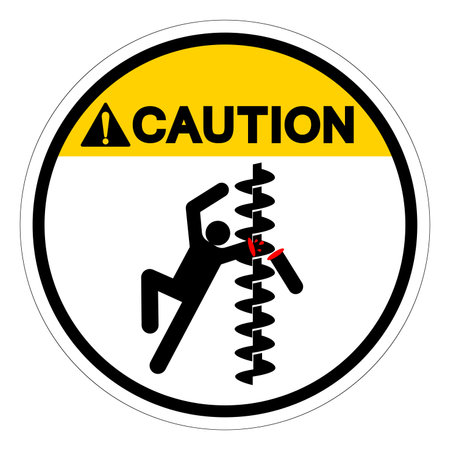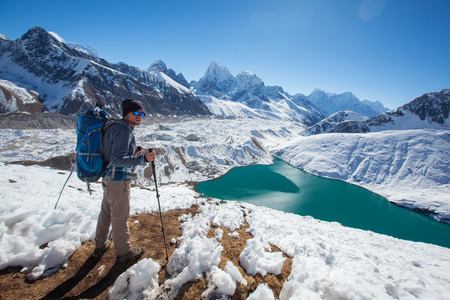1. Understanding Monsoon Flood Risks in India
The annual monsoon season is a defining feature of life across India, bringing essential rainfall for agriculture but also posing significant flood risks. Monsoon floods occur when intense rainfall overwhelms local drainage systems, rivers, and low-lying areas. Regions such as Assam, Bihar, Kerala, Maharashtra, and West Bengal are especially prone to sudden water surges due to their proximity to major river systems like the Brahmaputra, Ganga, and Godavari. Urban centres such as Mumbai and Chennai frequently experience flash floods because of inadequate drainage and rapid urbanisation. Common triggers include prolonged heavy rainfall, blocked stormwater drains, deforestation, and unplanned construction that disrupts natural water flow. Culturally, many communities live close to riverbanks or rely on traditional housing that may not withstand severe flooding. Infrastructural challenges—such as limited flood forecasting, insufficient embankments, and crowded living conditions—further increase vulnerability. Recognising these risks and understanding the unique challenges faced by different regions is crucial for developing effective safety strategies during the monsoon season.
Preparing Your Home and Family
When monsoon rains arrive in India, being proactive is essential for safeguarding your household. Here are some key steps to flood-proof your home, prepare emergency kits with local necessities, and ensure all family members—including those in joint family systems—are ready to respond effectively.
Key Steps for Flood-Proofing Indian Households
- Elevate Electrical Appliances: Place electrical items and wiring above potential flood levels to prevent short circuits and hazards.
- Seal Entry Points: Use sandbags or mud barriers at doors and low windows to block water entry.
- Clear Drains: Regularly remove debris from drainage systems, especially around courtyards and gali areas, to prevent clogging during heavy rainfall.
- Protect Documents: Store Aadhaar cards, property papers, and other vital documents in waterproof bags or containers.
- Secure Livestock and Vehicles: Move animals to higher ground and park two-wheelers/cars in elevated spots if possible.
Packing Emergency Kits with Local Staples
An emergency kit tailored to Indian needs ensures comfort during disruptions. Prepare one kit per household member, including the following essentials:
| Category | Recommended Items |
|---|---|
| Food & Water | Packed chivda, khakhra, dry fruits, packaged drinking water, ORS sachets |
| Clothing & Bedding | Cotton dhotis/sarees, lungis, raincoats, woolen shawls (if in North India) |
| Health & Hygiene | Mosquito repellents, sanitary pads, first aid box with common medicines (paracetamol, Dettol), masks |
| Documents & Cash | Aadhaar card copies, ration card, some cash in small denominations |
| Other Essentials | Torch (battery/solar), matchbox/lighter, mobile charger/power bank, whistle |
Creating Family Communication Plans for Joint Families
Joint families are common in India, making clear communication vital during emergencies. Follow these steps:
- Create a Contact List: Write down mobile numbers of all family members, neighbours (chacha/chachi/uncle/aunty), and local authorities (gram panchayat or municipal helpline).
- Select a Meeting Point: Agree on a nearby safe place (like a temple or school) where everyone can gather if separated.
- Assign Roles: Allocate responsibilities—for example: elders manage valuables/documents; youth help children and elderly; someone checks news updates in local language (Hindi/Bengali/Tamil etc.).
- Practice Drills: Conduct mock drills so everyone knows their role and the evacuation route during an actual flood.
Quick Reference Table: Family Preparedness Plan
| Action Item | Description/Who is Responsible? |
|---|---|
| Emergency Kit Packing | Eldest women supervise; children pack own snacks/water bottles |
| Shelter Location Awareness | Younger adults brief entire family on nearest relief centre/mandir/school |
| Status Updates & Messaging | Youth update group WhatsApp/family group when safe or need help |
| Caring for Elderly/Infants | Daughters-in-law & older siblings carry out support duties during evacuation |
Remember:
A well-prepared home and coordinated family response not only protect lives but also reduce panic when sudden floods occur during India’s monsoon season. Stay alert, stay connected—and always prioritise safety above all.

3. Staying Updated with Reliable Information
During the Indian monsoon season, staying updated with timely and accurate information is crucial for your safety and that of your family. Sudden water surges can occur without warning, so it’s important to use trusted sources and channels to receive real-time alerts about flood risks in your area.
Trusted Government Sources for Flood Alerts
The India Meteorological Department (IMD) is the primary government authority providing weather forecasts, rainfall warnings, and flood alerts. You can access IMD updates through their official website (mausam.imd.gov.in) or by following their verified social media handles on platforms like Twitter and Facebook. Many state disaster management authorities also provide region-specific warnings via SMS and local radio announcements. Make sure to register for these services where available in your city or village.
Local Authorities and Community Channels
Your local municipal corporation, district collectorate, or panchayat office may issue emergency notifications via public loudspeakers, community WhatsApp groups, or even mobile vans. Pay attention to such advisories and follow evacuation orders promptly if issued.
Leveraging Social Media & Messaging Platforms
In India, WhatsApp is widely used for instant communication during emergencies. Join local WhatsApp groups managed by residents’ associations or ward offices to receive quick updates. Follow local news channels and government agencies on social media for live coverage and instructions. However, always verify messages before acting; avoid forwarding unconfirmed news to prevent panic and misinformation.
Proactive Safety Actions
Set up alerts on your mobile phone for IMD weather warnings and download reliable apps like Mausam or Damini for lightning updates. Share official information with neighbours, especially senior citizens or those without smartphones. Being informed empowers you to take timely precautions against sudden floods during the monsoon in India.
4. Safety Measures During a Sudden Flood
When monsoon rains trigger sudden floods, quick and informed action is critical for safety. India’s diverse terrain and local traditions offer unique approaches to flood preparedness. Here are essential safety measures to follow if water levels rise unexpectedly:
Evacuation Guidelines
- Stay Calm and Listen: Tune into local radio (All India Radio) or government SMS alerts for real-time updates.
- Grab an Emergency Kit: Ensure your kit includes drinking water, dry snacks (like chivda or murmura), torch, batteries, important documents, and basic medicines.
- Move Quickly: Evacuate as soon as authorities advise. Do not wait until water enters your home.
- Avoid Walking or Driving Through Floodwaters: Even shallow moving water can be dangerous; use bamboo sticks to check depth if unavoidable.
Identifying Local Safe Zones
| Area Type | Common Safe Zones in India |
|---|---|
| Urban | Government schools, community halls, metro stations, elevated flyovers |
| Rural | Panchayat bhavans, temples on higher ground, village schools, elevated fields (Tilla) |
| Coastal/Delta Regions | Cyclone shelters, lighthouses, reinforced community centers |
Traditional Indian Best Practices
- Tying Important Belongings: Use strong ropes or ‘nariyal jute’ to secure valuables and livestock above expected water levels.
- Kutcha Roof Escape: In rural homes with thatched roofs, keep a ladder handy for roof access if water rises rapidly.
- Saree/Dhoti Adaptation: Tuck sarees/dhotis tightly above the knee for easier movement through water; avoid heavy clothing.
- Bamboo Rafts: In regions like Assam and Bengal, prepare makeshift rafts using banana stems or bamboo as per traditional knowledge.
- Community Alert Systems: Beat metal plates (‘thali’) or use conch shells (‘shankh’) to alert neighbors of rising water at night—an age-old practice in many villages.
If Trapped Indoors
- Move to Higher Floors or Roofs: Stay away from walls that may collapse due to pressure.
- Signal for Help: Use bright cloths or mobile phone flashlights to attract rescue teams’ attention during daylight and nighttime.
- Avoid Using Electrical Appliances: Switch off the main power supply if safe to do so.
Your Presence of Mind is Key!
The right actions at the right moment—guided by both modern warnings and traditional wisdom—can save lives during monsoon floods in India. Always prioritize personal safety over property and assist elders and children first when evacuating.
5. After the Flood: Health and Hygiene
Stay Vigilant: Preventing Waterborne Diseases
After the monsoon floodwaters recede, it is crucial for families across India to prioritise health and hygiene. Floods often contaminate water sources, leading to outbreaks of diseases such as cholera, typhoid, diarrhoea, and dengue. Be alert for symptoms like fever, vomiting, loose motions, or skin rashes, and seek medical attention at your nearest Primary Health Centre (PHC) if needed.
Safe Drinking Water Practices
Do not drink tap or well water unless it has been boiled for at least 20 minutes or treated with chlorine tablets available at local pharmacies or Anganwadi centres. Store drinking water in clean, covered vessels—preferably copper or steel—and avoid using plastic containers that may harbour bacteria. Encourage everyone in your family to use only this safe water for drinking and brushing teeth.
Food Handling and Preparation
Discard any food that came into contact with floodwater. Wash fruits and vegetables thoroughly with boiled water before consumption. Cook food freshly every day and consume it hot; avoid eating stale or leftover items. In many Indian households, cooking over a chulha or gas stove is common—make sure these are cleaned and dried before reuse.
Personal Hygiene Habits
Make handwashing with soap a routine practice, especially after using the toilet and before meals. Use neem leaves or Dettol as an extra precaution where available. Children should be taught not to play in stagnant water to prevent infections like leptospirosis or skin allergies.
Keep Surroundings Clean
Remove stagnant water from around the house to stop mosquito breeding—a key step to avoid malaria and dengue. Use mosquito nets while sleeping and apply coconut oil mixed with camphor on exposed skin as a natural repellent, a method commonly used in many Indian homes.
Community Awareness and Support
If you live in a joint family or community housing (society), coordinate cleanliness drives post-flood. Share information about government health camps and vaccination drives organized by ASHA workers or local authorities. By working together and adopting these culturally-rooted practices, Indian families can reduce the risk of illness and recover safely after a flood.
6. Helping Your Community
Supporting Each Other During Monsoon Floods
Monsoon floods can overwhelm even the most prepared individuals, making community support vital for everyone’s safety. India has a long tradition of neighbourhood unity—known as Mohalla Committees or RWA (Residents’ Welfare Associations). These groups often coordinate relief and help ensure that vulnerable residents receive timely assistance.
Traditional Neighbourhood Support Systems
In many Indian communities, neighbours come together to share resources like food, drinking water, and shelter during emergencies. Keep in touch with your local leaders and stay informed about community plans. In rural areas, village panchayats often take the lead in organizing rescue efforts and providing safe spaces. Stay connected with these networks, participate in meetings, and volunteer for local initiatives.
Volunteering Safely
If you are able to help, consider volunteering with local NGOs or government agencies involved in flood response. Tasks might include distributing relief supplies, assisting with evacuations, or helping at relief camps. Always follow safety protocols such as wearing waterproof boots, gloves, and masks when needed. Avoid wading into unknown or moving waters, and never put yourself at risk.
Offering Help While Ensuring Personal Safety
- Coordinate with local authorities before offering any assistance.
- Use WhatsApp groups or phone calls to check on elderly neighbours or families with small children.
- Share reliable information from trusted sources to prevent rumours and panic.
- Prioritize your own safety—never enter flooded buildings or attempt rescues alone.
Together We Are Stronger
Your actions can make a big difference during a monsoon flood. By supporting each other through traditional community networks, responsible volunteering, and safe practices, we can minimize risks and ensure that everyone gets the help they need. Remember: helping others is important—but your own safety always comes first.


